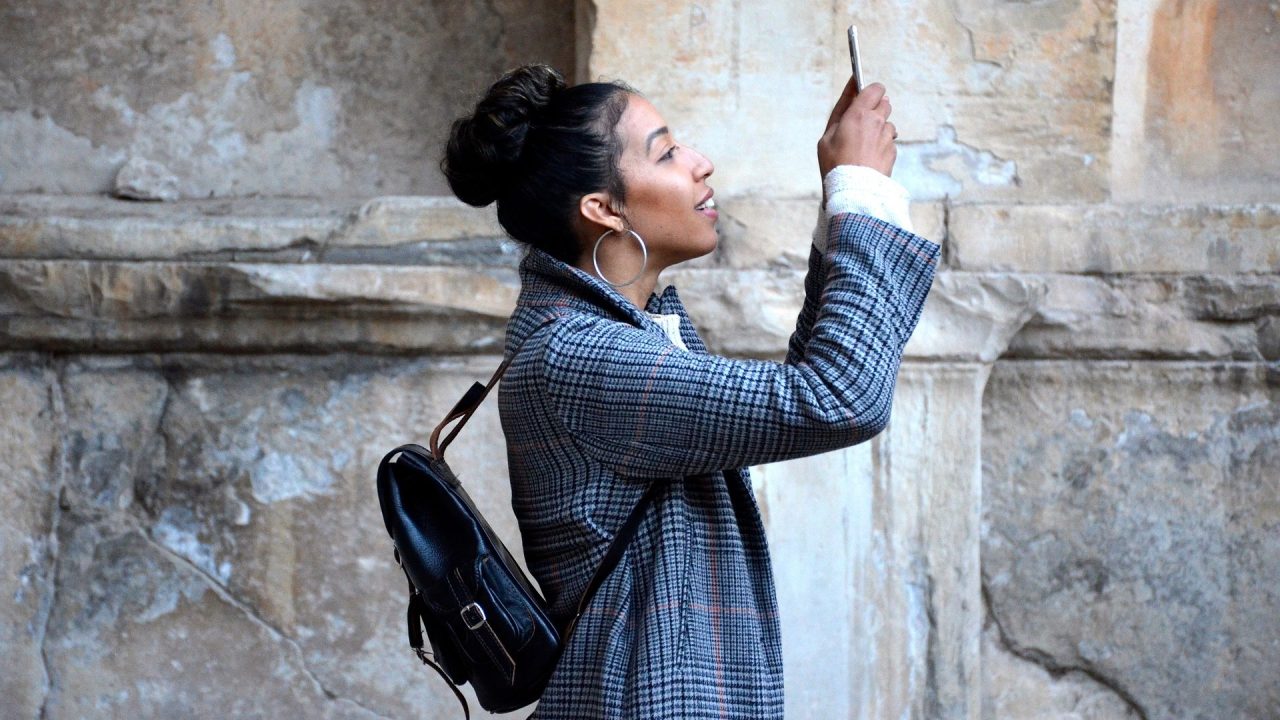
Everyone is eager for a return to normal, which includes access to museums and other cultural venues. While countless people likely have been inspired and sustained by virtual museum tours these past few months, there is something very powerful about visiting galleries and venues and being in the presence of physical exhibits that many crave. Artist Maira Kalman says “a visit to a museum is a search for beauty, truth, and meaning in our lives,” and she advises us to “go to museums as often as you can.” What will museum visits be like as venues reopen in the context of the novel coronavirus and new public health safety guidelines? The answer might be found on your smartphone.
Anyone who has been to a museum, zoo, aquarium, or other cultural venue in the last decade probably noticed the same thing: almost every visitor had a smartphone. According to the Pew Research Center, 93 percent of Millennials own a smartphone and other generations aren’t far behind. 90 percent of Gen Xers and 68 percent of Baby Boomers own one.
This is good news for museums as they reopen and look for ways to keep visitors safe and engaged during the pandemic. Smartphones will enable visitors to maintain physical distance from others, avoid shared touchpoints, and increase accessibility.
Enable Physical Distancing
Maintaining physical distance from others and wearing masks help prevent the spread of the coronavirus. But it can be difficult to hear others when they are far away and speaking behind a mask, especially if speakers are also competing with HVAC units and other background noises. Shouting can strain the speaker’s voice and is believed to increase risk of spreading the virus if speakers are infected.
Audio-over-Wi-Fi systems enable museum visitors with smartphones and smart devices to practice safe physical distancing and hear clearly. Visitors simply download a free app and stream museum audio—it could be pre-recorded or live—from any venue audio source to their smart devices. Visitors experience clear sound directly to their ears via their Bluetooth-enabled hearing aids or personal earbuds and headphones. They can adjust volume to suit their needs and hear while staying safely away from others. No more crowding close together in groups to better hear a docent or video display, and no struggling to read lips or understand speech muffled behind a mask.
Eliminate Shared Touchpoints
In an effort to inform and engage visitors pre-pandemic, many museums offered interactive touchscreens, flipbooks, and pushbutton or other tactile displays. Some may have even reused programs and information guides designed to help visitors navigate the venue and optimize their visits. Unfortunately, each of these is a conduit for spreading germs and could increase exposure to the coronavirus. Smartphones and other personal smart devices that guests already have on hand can enable museums to eliminate shared touchpoints and deliver information to guests safely.
One way museums can do this is with QR codes displayed throughout a venue. When visitors take a picture of the code with their smartphone, they are directed to a specific site that could feature information about the exhibits and artists. Similarly, museum-specific apps can provide visitor maps and programs as well as information about current and future exhibits and events. They also can link to visitor surveys that provide museums valuable insight about guest experiences. Apps featuring augmented reality (AR)—think Pokémon Go—are another way to engage visitors and add layers of detail and content to exhibits.
Some innovative museums had already begun leveraging the ubiquity of smartphones and cloud technology to connect with visitors and eliminate shared touchpoints before they were forced to close in response to the pandemic.
- Earlier this year, the Detroit Institute of Arts introduced a revolutionary mobile tour called Lumin that used AR and 3D mapping—as well as overlays, videos, photos, animations, and sounds—to provide guests more information about exhibits via their personal smart devices.
- The Toledo Museum of Art offered visitors a free app for download that featured scavenger hunts, multimedia guides, and audio commentary.
- The Deutsches Museum in Munich, one of the world’s oldest and largest museums of science and technology, began developing a program that would have guests use their smartphones to interact with exhibits and enable them to take measurements and conduct experiments.
Expect more of these apps and creative uses for smart devices as museums reopen and look to engage with visitors while keeping them safe. These alternatives to touchscreens and tactile interactives foster engagement (visitors can easily access more information about displays on demand rather than waiting in queue for their turn at a crowded display) and reduce exposure to germs on shared surfaces.
Increase Accessibility
In addition to protecting guests by enabling them to practice physical distancing and reducing their exposure to shared interactives, smartphone technology eliminates the traditional barriers to accessibility. The inability to hear or see an exhibit or art display are no longer barriers to enjoying an experience. For people with disabilities, life-changing smartphone features include voice-control features to navigate the phone, apps that transcribe conversation, and apps that tell visually impaired users what the text in a photo says.
When museums invest in Wi-Fi-connected audio systems, they enable visitors with smart devices to experience the exhibits, regardless of their ability to see or hear. They also eliminate language barriers.
Museums that have tour guides and translators available can use Wi-Fi-connected audio and smartphone apps to deliver real-time translation to smartphones. Guests simply choose the channel for their preferred language and listen via headphones or earbuds. Another option is to select a system that translates recorded content and delivers it to guests’ smartphones. Some of these systems can provide translated content for more than thirty languages.
Visitors with mobility challenges can benefit from GPS-triggered smartphone technology that lets them move about at their own pace and focus on what interests them most. Content is automatically delivered (no need to press a button or touch any shared surfaces) as visitors pass exhibits or reach a trigger point. When combined with powerful storytelling, this technology enables guests to engage more fully in their visit and get caught up in the cinematic story associated with what they are experiencing.
The prevalence of smartphones may once have been considered immaterial or even a distraction in museums, zoos, aquariums, and other venues, but the benefits of smartphones in this new environment are clear. When museums reopen, smartphones will help keep guests safe and deliver an even better, more inclusive, and engaging experience. Imagine that—feeling closer and more connected than ever, while staying safely apart.
About the author:
Kim Spencer is the marketing director at Listen Technologies, a wireless audio manufacturer that provides solutions for assistive listening, multilingual audio transmission, and guided or self-guided tour groups and conferences.








